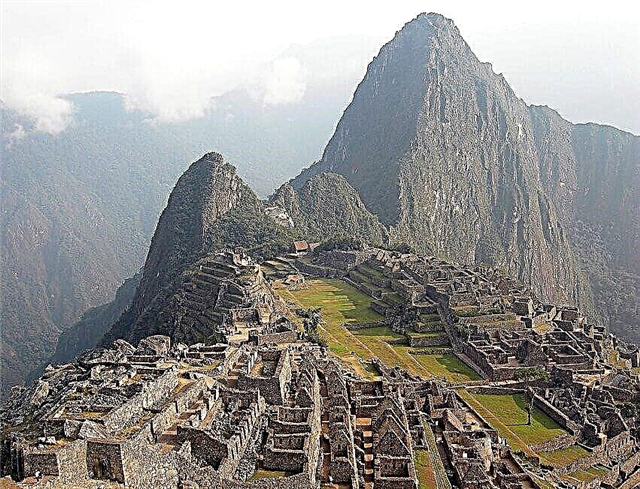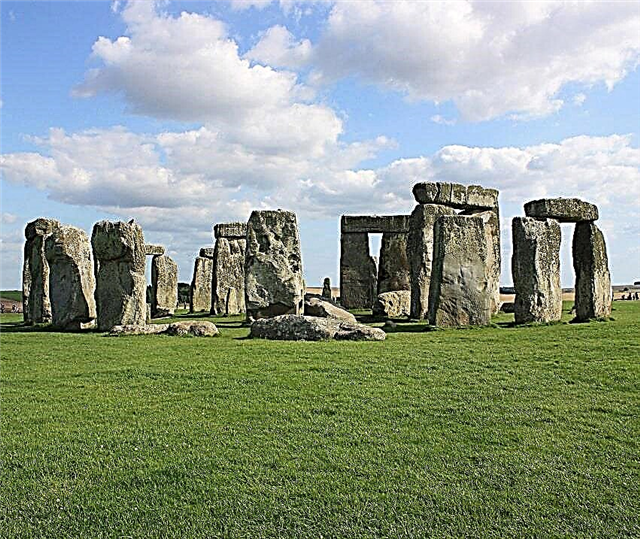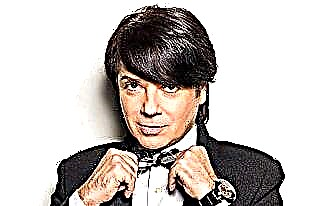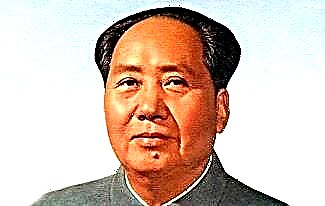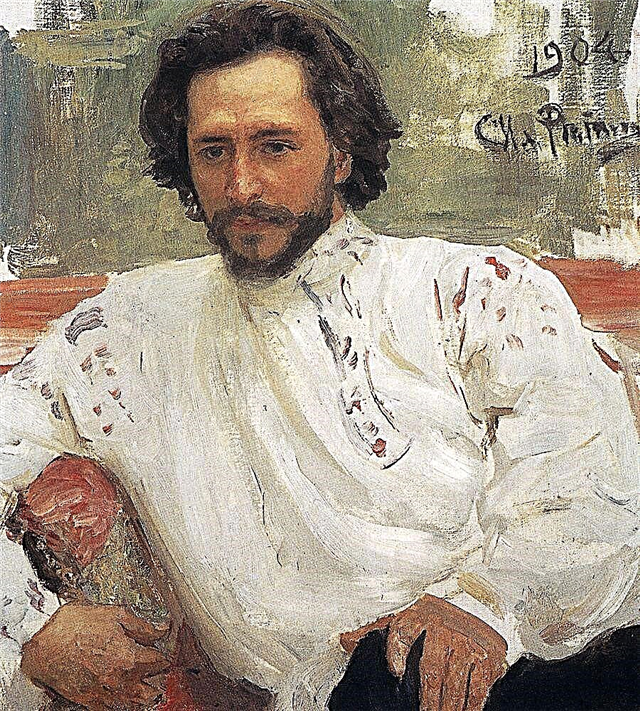The city is simultaneously one of the highest achievements and one of the worst shortcomings of human civilization. On the other hand, cities, especially large ones, with rare exceptions, are very inconvenient for life. Problems with transport, the cost of housing, the general high cost, crime, noise - the disadvantages of cities can be listed for a very long time. Living in big cities often turns into survival.
However, nothing better has been invented yet. Utopian projects like the resettlement of the entire US population from ocean to ocean into small one-story villages or the relocation of millions of people from the European part of Russia, primarily Moscow and the Moscow region, to the Urals and the Far East, appear from time to time, but almost no supporters are found. Cities continue to grow and develop like a pump pulling in people and resources.
1. About half of the world's population lives in cities, they occupy less than 2% of the territory, and consume three quarters of resources, and this ratio is constantly and steadily increasing towards cities. In practice, this means that life in cities (on average, of course) is much more convenient than in rural areas.

2. There is no precise, comprehensive definition of “city”. At different times, in different sciences and different countries, it is interpreted in different ways. In the most general sense, a city is “not a village,” a place whose inhabitants are not very farmed and live in dwellings of a different architecture. Nevertheless, even this, the most general definition is limp on both legs - back in the middle of the 19th century, pig breeders lived in the center of London, raising thousands of pigs, and Paris was starving not because of a lack of grain, but from the cold - the city mills on the frozen Seine were not worked. And there is nothing to say about chickens and vegetable gardens in private houses on the outskirts of big cities.
3. The exact time of the appearance of the first cities is also a reason for discussions with a spread of a couple of millennia. But cities surely began to emerge when people had the opportunity to produce surplus agricultural products. It could be exchanged for something useful (tools, utensils) or even pleasant (jewelry). The townspeople produced this useful and pleasant. In the city, you could exchange your agricultural products for another. Hence the thousand-year tradition of the presence in any market not only of counters with goods, but also of artisan shops.

Jericho is considered one of the first cities
4. Already in ancient Rome, overpopulation gave rise to statements like “There can be no misfortune where custom brought people back to nature”. So Seneca wrote about the ancient Germans, who lived by hunting and gathering.

Not everyone liked living in ancient Rome
5. The English farmer and publicist William Cobbett called the cities "pimples", London - "a gigantic pimple", and quite logically suggested squeezing all the pimples off the face of the English land. It was the first half of the 19th century ...
6. The famous book by Adam Smith on the "invisible hand of the market" - "Studies on the nature and causes of the wealth of nations" was born after the author compared the food supply of two cities: London and Paris. In the English capital, the authorities did not interfere with the supply, and everything was in order with him. In Paris, the authorities tried to control the supply and trade of food, and this came out very badly for them, right up to the revolutions. Smith's conclusion was, at first glance, obvious, only he did not take into account the logistics of supplying products to both cities - Paris is located 270 km from the sea, and London is 30. Delivery of goods by land is many times more difficult and expensive.
7. In modern Paris, on the contrary, the supply is better than in London. Runji's gigantic wholesale market allows for the existence of thousands of small grocery stores within walking distance of Parisians. Residents of London, in which there are almost no independent stores left, have to go to supermarkets.

At the Runji market in Paris
8. Systems of autonomous water supply are mentioned in the Bible. Ancient Roman aqueducts are also known to everyone. In Medieval European cities, including Russia, water pipes appeared en masse in the XII-XIII centuries.

Roman aqueducts still stand calmly
9. The first sewerage system appeared in the Indian city of Mohenjo-Daro in the III millennium BC. e. A huge sewage system operated in ancient Rome. And in New York, the drainage system was opened in 1850, in London in 1865, in Moscow in 1898.

In a London sewer, 19th century
10. The system of separate waste collection first appeared in 1980 in the cities of Holland.
11. The first metro appeared in London in 1863. The youngest is the subway of the Kazakh city of Alma-Ata - it was opened in 2011. The most extensive metro network is laid in Shanghai - 423 km, the shortest - in Haifa (Israel), its length is only 2 km. In Dubai, unmanned metro trains run on 80 km long lines.
12. London is also a pioneer in regular urban bus service. In the British capital, they began in 1903. But in Russia, residents of Arkhangelsk became the first passengers of a shuttle bus in 1907.
13. The first horse-drawn tram appeared in Baltimore (USA) in 1828. The debut of the electric tram took place in 1881 in Berlin. The very next year, the first tram in the then Russian Empire was launched in Kiev.
14. The first trolleybus line was opened in Berlin in 1882. In Moscow, the trolleybus service was launched in 1933.

One of the first Moscow trolleybuses
15. The first ambulance service was established in 1881 in Vienna. A similar service appeared in Moscow in 1898. Both here and there the cause was the tragedy with numerous victims: a fire in the Vienna theater and a mass crush on Khodynka.
16. Between the English city of Letchworth (33 0 00 inhabitants) and the Russian Volgograd (more than 1 million people) there is by no means a well-known connection. Letchworth was built on a single basis at the beginning of the twentieth century as the first “garden city”: a combination of urban amenities and nature. The Russian architect Vladimir Semyonov took part in the construction, who later used a number of ideas from Letchworth when drawing up a plan for the post-war restoration of Stalingrad.
17. Slab City is probably the only city in the world whose residents do without city administration, police and utilities. On an abandoned military base with a mass of bunkers and other structures, retirees, homeless people and simply lovers of a free life come together. There is a church in Slab City, a school source drives in for the children, electricity is obtained from generators, there are underground water sources and surface lakes - people live an unusual for most of us, but quite normal life.

Slab City - a city where everyone is happy with life
18. At least 7 cities are located in two countries at once. In most of them, the border is very conditional - it is indicated by road markings or decorative items and even flower beds. But the Americans guard the border in the American-Mexican Nogales in the same way as in other areas. In the north of the United States, in Derby Line / Stansted (Canada), the border regime is softer, but a passport is needed, and for violating the border crossing regime, you can get up to $ 5,000 in fines.

Nogales - a city of contrasts
19. An exact copy of the Austrian town of Hallstatt was built in China. For 940 million dollars, the sponsor of the project, a Chinese billionaire, made a smart advertisement for Austria - after the construction of the copy was completed, the Chinese began to visit Austria 10 times more often.

This is the original

And this is an expensive Chinese copy.
20. According to forecasts of UN experts, by 2050, 3/4 of the world's population will live in cities. Moreover, cities will grow very unevenly. The population of the capital of Cote d'Ivoire, Yamoussoukro, will almost double, in Chinese Jinjiang there will be a quarter more inhabitants, but the population of Tokyo or London will grow slightly - by 0.7 - 1%.

